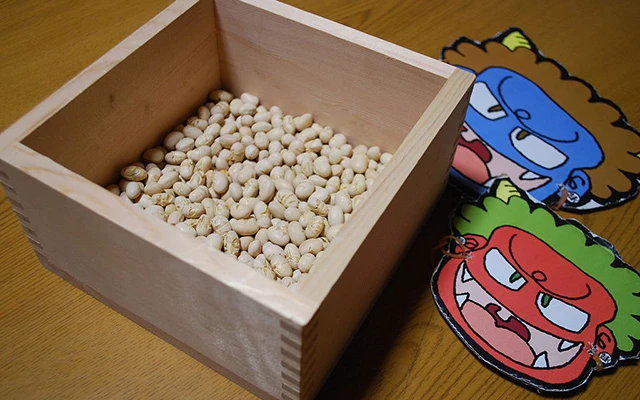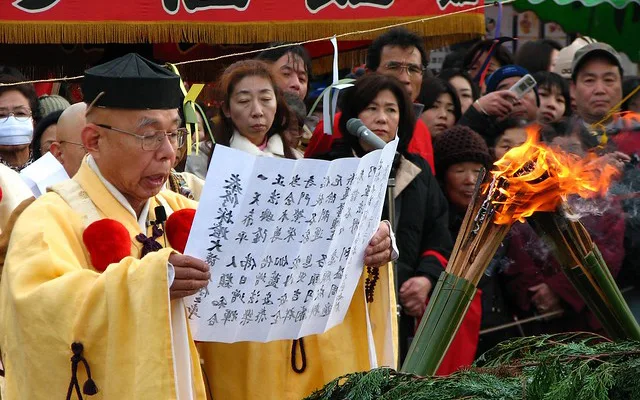Where to celebrate Setsubun in Japan?
How to obtain a genuine experience by observing Setsubun Festival in Tokyo and other destinations across Japan.
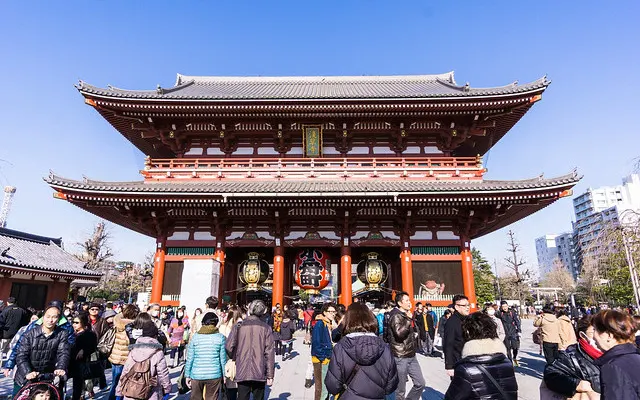
A unique trip to the Japanese cultural and religious roots
For everyone who happens to be in Japan during Setsubun, visiting a Buddhist temple or a Shinto shrine in order to attend the Setsubun rituals is a must activity. A special characteristic of the mamemaki rituals that are taking place in temples is that in some of them the phrase “Oni wa soto!!” (Demons out!) is not mentioned at all. Instead, the participants only shout “Fuku wa Utsi!” (Good fortune in!). The reason is based on a belief indicating that no oni (demons) can not survive in a temple, thus there is no need to chase them. There are many famous places which hold special events across the country and below you can find some of them.
Zojoji Temple, Tokyo
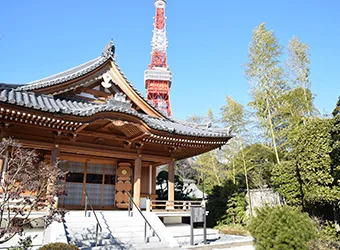
Zojoji is one of the most popular temples to celebrate Setsubun in Tokyo. It is located near to Tokyo Tower in Shiba Park and every year the celebration that takes place here attracts approximately 3000 visitors.
Each year the bean throwing ritual (mamemaki) is hosted by famous politicians, celebrities and sumo wrestlers. The selection of the personalities is made according to their zodiac sign which corresponds to the ongoing Chinese zodiac year. The highlight of the event is, of course, the flying soybeans over the crowd.
Ikegami Honmonji Temple, Tokyo
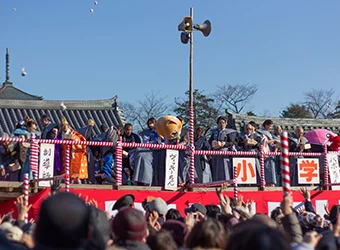
Ikegami Honmonji Temple holds an annual Setsubun celebration that attracts between 10.000 and 13.000 thousand observers. That makes it one of the largest events of the capital.
It is a historic temple and definitely full of positive energy, due to the fact that here was the final resting place of the father of professional wrestling, Rikidozan. The guest stars to the bean throwing ritual are mostly well-known athletes, while the temple is famous for the traditional dessert Kuzumochi that is served here.
Asakusa Sensoji Temple, Tokyo

Asakusa district is one of the most famous touristic districts in Japan. The Sensoji Temple hosts the Setsubun celebration from the Heian period and it was the first temple were a large-scale Setsubun ceremony has been ever organized.
On an annual basis over 100.000 people chose to observe the bean throwing ceremony here, and that makes it by far the largest Setsubun event of the capital of Japan. The names of the celebrities that are hosting the celebration are not announced until the Setsubun day and one of the highlights of the feast is the dance of the “Sevens Lucky Gods”.
The Setsubun chant is also slightly different here since given that no demons can exist in the presence of the great Kannon goddess, everyone sings “Senshu banzei! Fuku wa utsi!” that means good fortune or eternity.
Naritasan Temple, Narita, Chiba Prefecture

Naritasan is an iconic temple with a history of over 1000 years. It is one of the most significant attractions of the city of Narita which is situated approximately 70 km from Tokyo.
Each year it attracts around 40.000 visitors who observe the celebration of Setsubun. The famous bean throwing ritual is hosted by famous kabuki actors, well-known actors as well as by other celebrities. While every year, an enormous amount of soybeans (860 kg) and peanuts (400 kg) are thrown to the crowd.
Sogenji Temple, Okayama
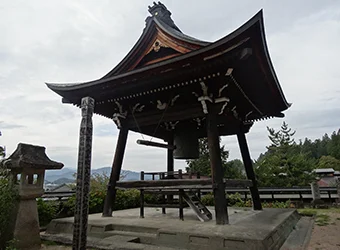
Sogenji is a 400-year-old temple which is located some kilometers away from the center of Okayama.
The Setsubun celebration at the temple has a vivid and active perspective since the crowd takes part literally at the ritual by throwing the roasted soybeans to the demons.
The representation involves three evil spirits that attack the crowd but in the end, they are always defeated effectively.

Is Setsubun the best period to visit Japan?
Japan is one of the most interesting tourist destinations with big metropolises, modern lifestyle, beautiful landscapes, and a rich history. The majority of the potential visitors thought, tend to forget the deep-rooted culture and the spiritual experience that someone can obtain by observing some of the unique rituals which are related to the old Japanese tradition. The Festival of Setsubun is probably one of the most significant among them.
Japan is very cosmopolitan – it values its origins, but a world view hovers above this narrow perspective. The interest of the Japanese in their folk culture is transcendental.
Exploring the fundamentals of Japanese tradition
Setsubun can be characterized as an identical part of the Japanese culture and includes religious, spiritual, and societal elements. It reveals deep common beliefs and old superstitions related to the history of Japanese people. Making a trip to Japan around the 3rd of February each year gives an extraordinary opportunity to explore the fundamentals of Japanese society from a cultural perspective. Setsubun incorporates many interesting, funny and bizarre rituals observed in a family as well as in public level and all of them promise a genuine and unforgettable Japanese experience.
